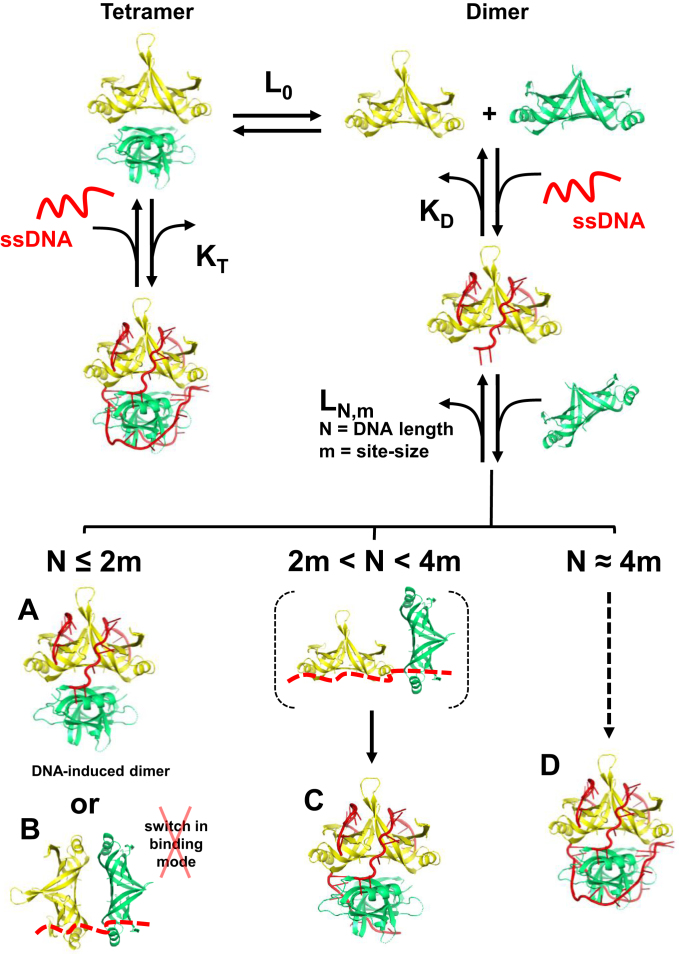Figure 6.
Working model showing how DNA binding is coupled to the oligomeric state of Rim1. Rim1 exists in solution in a dimer–tetramer equilibrium with L0 intrinsic oligomerization constant. In the left branch of the model, Rim1 binds ssDNA as a pre-formed tetramer with an equilibrium binding constant KT that is currently undetermined. The models for ssDNA bound to Rim1 were based on the DNA in the crystal structure of EcSSB (PDB:1eyg). The right branch of the model shows binding of two dimers of Rim1 and possible protein–DNA complexes (A-D) that can be formed depending of the length of the ssDNA. Independent of the ssDNA length, the binding constant of the second Rim1 dimer, LN,m, is larger than L0, indicating that DNA binding to the first Rim1 dimer favors tetramerization. Also, for N ≈ 4 m LN,m increases to the point that it cannot be distinguished from KD, and Rim1 appears to bind as a pre-formed tetramer.

